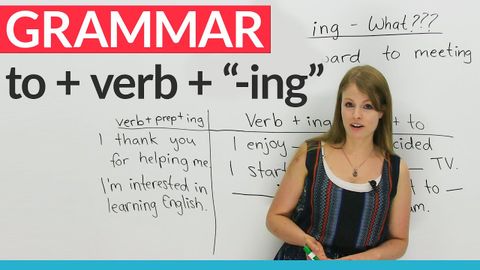Engligh Grammar: 動詞「-ing」の前に「to」を使う方法 (Engligh Grammar: How to use "to" before an "-ing" verb)
Flora Hu が 2021 年 01 月 14 日 に投稿  この条件に一致する単語はありません
この条件に一致する単語はありません- n. (c./u.)開始時刻 : 開始場所 : 開始;開始場所:開始時刻;始まり;はっとすること
- v.t./i.始める : 始まる
- v.t.(機器などを)起動する
- n. (c./u.)審査員 : 判定者;裁判官
- v.t./i.審査する : 審判を行う;判断する;判決を下す
US /ˈɪŋɡlɪʃ/
・
UK /ˈɪŋglɪʃ/
- n. (u.)英語
- prop. n.イングリッシュ
- adj.英国の : 英国人
- n.イギリス人;英語訳;英文学;英国風
- v.t.英語に翻訳する
エネルギーを使用
すべての単語を解除
発音・解説・フィルター機能を解除

